
ICORR 2013 Workshop
Present and future of non-invasive PNS-Machine Interfaces
Organizers:
Claudio Castellini, Ph.D.
Robotics and Mechatronics Center
DLR – German Aerospace Center
claudio.castellini@dlr.de
Panagiotis K. Artemiadis, Ph.D.
Ira A. Fulton School of Engineerings
Arizona State University
panagiotis.artemiadis@asu.edu
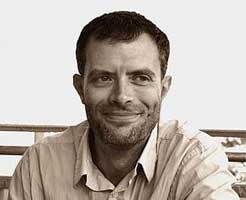 Claudio Castellini, Ph.D. received a Laurea in Biomedical Engineerings in 1998 from the University of Genova, Italy and a Ph.D. in Artificial Intelligence in 2005 from the University of Edinburgh, Scotland. He then spent 4.5 years as a postdoctoral researcher in the Advanced Robotics Laboratory of the University of Genova, Italy, working on machine learning applied to human sensorimotor data. Since 2009 he is a researcher at the DLR (German Aerospace Center) in the Bionics group. He has so far (co)authored some 40 peer-reviewed papers.
Claudio Castellini, Ph.D. received a Laurea in Biomedical Engineerings in 1998 from the University of Genova, Italy and a Ph.D. in Artificial Intelligence in 2005 from the University of Edinburgh, Scotland. He then spent 4.5 years as a postdoctoral researcher in the Advanced Robotics Laboratory of the University of Genova, Italy, working on machine learning applied to human sensorimotor data. Since 2009 he is a researcher at the DLR (German Aerospace Center) in the Bionics group. He has so far (co)authored some 40 peer-reviewed papers.
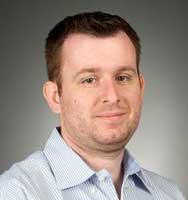 Panagiotis Artemiadis received the Diploma and Ph.D. in Mechanical Engineering from National Technical University of Athens (NTUA) Greece, in 2003 and 2009 respectively, followed by a Postdoctoral appointment at the Newman Lab for Biomechanics and Human Rehabilitation at MIT, from 2009-11. He is currently with the School for Engineering of Matter, Transport and Energy, Arizona State University, where he is an Assistant Professor and Director of the Human-Oriented Robotics and Control Lab. His research interests include: Rehabilitation Robotics, Neuro-Robotics, Brain-Machine Interfaces and Human-Robot Interaction. Prof. Artemiadis has published close to 50 papers to journals and refereed conferences, while 3 of them have been included in the top papers in international conferences. He is editor or editorial member of international journals and conferences and has worked in projects funded by the EC, NSF and the Greek secretariat for Research & Technology.
Panagiotis Artemiadis received the Diploma and Ph.D. in Mechanical Engineering from National Technical University of Athens (NTUA) Greece, in 2003 and 2009 respectively, followed by a Postdoctoral appointment at the Newman Lab for Biomechanics and Human Rehabilitation at MIT, from 2009-11. He is currently with the School for Engineering of Matter, Transport and Energy, Arizona State University, where he is an Assistant Professor and Director of the Human-Oriented Robotics and Control Lab. His research interests include: Rehabilitation Robotics, Neuro-Robotics, Brain-Machine Interfaces and Human-Robot Interaction. Prof. Artemiadis has published close to 50 papers to journals and refereed conferences, while 3 of them have been included in the top papers in international conferences. He is editor or editorial member of international journals and conferences and has worked in projects funded by the EC, NSF and the Greek secretariat for Research & Technology.
Statement of objectives:
This workshop is about human-machine interfaces which connect non-invasively to the peripheral nervous system (PNS-MIs), surface electromyography (sEMG) being the paradigmatic PMI. sEMG is in use since the 60s to proportionally control single-DoFs hand prostheses. It involves neither surgery nor hospitalisation; its signal remains rich in information even decades after an amputation, and provides clearer signals than brain-computer interfaces such as, e.g., electroencephalography.
Since then literally dozens different approaches have been applied to sEMG to decode an amputee's intentions, but none of them have as yet made it to the clinics: as a PMI, sEMG has revealed to be unreliable, badly conditioned, subject to change with time, fatigue and sweat. No valid alternatives to sEMG are in sight, and nevertheless, dexterous prosthetic hands are now appearing on the market, demanding ever better control by the patient.
So, how can we bridge this gap? We address four fundamental sub-problems:
1. what is wrong with the current approach? why do clinicians not use it?
2. how can we better use sEMG?
3. what alternative, radically new solutions are available, if any?
4. what are the benefits of sharing control between the human subject and the prosthesis?
The workshop revolves around the four themes spanned by the above questions: current limitations, sEMG, novel techniques and control. The workshop will bring together roboticists, clinicians and neuroscientists interested in these questions. We foresee participation of interested young scientists, whose interaction with the experts will foster discussion and possibly indicate some ways ahead. At the end of the workshop we will have an indication of how to direct current research efforts in order to solve each of the aforementioned problems.
Workshop schedule:
13:45-13:55 |
Welcome Message |
||
13:55-14:15 |
Merkur Alimusaj, |
University of Heidelberg, Germany |
S-EMG in upper extremity Prosthetics: Where are we? |
14:15-14:35 |
Todd Kuiken, |
Rehabilitation Institute of Chicago, USA |
Bridging the Gap: Transitioning Neural Control Systems from the Research Lab to the Clinic |
Break |
|||
14:45-15:05 |
Eric Scheme, |
University of New Brunswick, Canada |
Enhancing the Clinical Reliability of Pattern Recognition Based Myoelectric Control |
15:05-15:25 |
Arjan Gijsberts, |
IDIAP, Martigny, Switzerland |
The Ninapro Project: Database, Benchmarks and Challenges |
15:25-15:45 |
Patrick M. Pilarski |
University of Alberta, Canada |
Learning and Using Contextual Information in the Control of Assistive Devices |
15:45-15:55 |
Break |
||
Claudio Castellini |
DLR, Oberpfaffenhofen, Germany |
Using Ultrasound Imaging as a novel PNS-Machine Interface |
|
16:15-16:35 |
William Craelius, |
Rutgers University, USA |
Inherent Limitations of Surface Electromyography for Controlling Artificial Hands |
16:35-16:45 |
Break |
||
Dario Farina, |
University of Göttingen, Germany |
Myocontrol integrated with computer vision for dexterous use of active prostheses |
|
17:05-17:25 |
Panagiotis Artemiadis |
Arizona State University, USA |
Advances in EMG control interfaces: Beyond decoding, beyond subject-specificity |
17:25-17:45 |
Antonio Bicchi, |
Centro Piaggio, Pisa, Italy |
Tele-impedance control of a hand intended for prosthetic applications |
17:45-18:15 |
Discussion and future developments |
||
About the Speakers
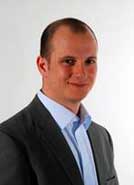 Merkur Alimusaj is a Prosthetician/Orthotician, and studied Prosthetics and Orthotics Engineering at the University of Applied Sciences in Gießen (Germany). Since 2008 he is the Head of the Prosthetics and Orthotics Centre at the University Hospital of Heidelberg, Germany. His main reaserch field is biomechanics of lower and upper limb prosthetics.
Merkur Alimusaj is a Prosthetician/Orthotician, and studied Prosthetics and Orthotics Engineering at the University of Applied Sciences in Gießen (Germany). Since 2008 he is the Head of the Prosthetics and Orthotics Centre at the University Hospital of Heidelberg, Germany. His main reaserch field is biomechanics of lower and upper limb prosthetics.
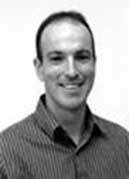 Levi J Hargrove (S’05-M’08) received his B.Sc. and M.Sc. and PhD degrees in electrical engineering from the University of New Brunswick (UNB), Fredericton, NB, Canada, in 2003 2005, and 2007 respectively. He joined the Center for Bionic Medicine at the Rehabilitation Institute of Chicago in 2008 and now direct the Neural Engineering for Prosthetics and Orthotics Laboratory. His research interests include pattern recognition, biological signal processing, and myoelectric control of powered prostheses. Dr. Hargrove is a member of the Association of Professional Engineers and Geoscientists of New Brunswick and an IEEE Member. He is also a Research Assistant Professor in the Department of Physical Medicine and Rehabilitation (PM&R) at Northwestern University.
Levi J Hargrove (S’05-M’08) received his B.Sc. and M.Sc. and PhD degrees in electrical engineering from the University of New Brunswick (UNB), Fredericton, NB, Canada, in 2003 2005, and 2007 respectively. He joined the Center for Bionic Medicine at the Rehabilitation Institute of Chicago in 2008 and now direct the Neural Engineering for Prosthetics and Orthotics Laboratory. His research interests include pattern recognition, biological signal processing, and myoelectric control of powered prostheses. Dr. Hargrove is a member of the Association of Professional Engineers and Geoscientists of New Brunswick and an IEEE Member. He is also a Research Assistant Professor in the Department of Physical Medicine and Rehabilitation (PM&R) at Northwestern University.
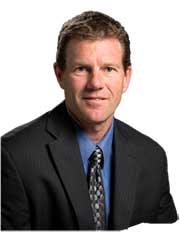 Kevin Englehart (Senior Member, IEEE) is the Director of the Institute of Biomedical Engineering, and Professor of Electrical and Computer Engineering at the University of New Brunswick, Canada. Dr. Englehart has more than 150 peer-reviewed publications, and has authored five book chapters in biomedical signal processing.
Kevin Englehart (Senior Member, IEEE) is the Director of the Institute of Biomedical Engineering, and Professor of Electrical and Computer Engineering at the University of New Brunswick, Canada. Dr. Englehart has more than 150 peer-reviewed publications, and has authored five book chapters in biomedical signal processing.
Recent partnerships with the Rehabilitation Institute of Chicago and the Defense Advanced Research Projects Agency have resulted in significant advances in the control of artificial limbs. Dr. Englehart currently leads a team that has developed a pattern recognition based control system and a dexterous / affordable hand currently undergoing clinical trials.
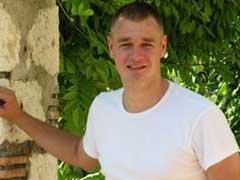 Arjan Gijsberts obtained an MSc in Computer Science from Delft University of Technology in 2007 and a PhD in Robotics from the Italian Institute of Technology in Genoa, Italy, in 2011. After acquiring his doctorate, he moved to Switzerland to assume a position as postdoctoral researcher at Idiap Research Institute, where he works within the NinaPro project to improve myoelectric control of upper-limb prostheses using modern machine learning techniques. His primary research interest is the application of online and incremental machine learning techniques in the robotics and bionics domains.
Arjan Gijsberts obtained an MSc in Computer Science from Delft University of Technology in 2007 and a PhD in Robotics from the Italian Institute of Technology in Genoa, Italy, in 2011. After acquiring his doctorate, he moved to Switzerland to assume a position as postdoctoral researcher at Idiap Research Institute, where he works within the NinaPro project to improve myoelectric control of upper-limb prostheses using modern machine learning techniques. His primary research interest is the application of online and incremental machine learning techniques in the robotics and bionics domains.
 Patrick M. Pilarski has been actively pursuing intelligent systems and biomedical device research for over a decade. He is currently with the Reinforcement Learning & Artificial Intelligence Laboratory and the Alberta Innovates Centre for Machine Learning (AICML), University of Alberta, Edmonton, Canada. There he leads the AICML Adaptive Prosthetics Project—an interdisciplinary initiative focused on the use of machine intelligence to enhance artificial limbs and other assistive rehabilitation devices. As part of this research, Patrick explores new real-time machine learning techniques for prediction and control, including methods for human-device interaction and communication, long-term control adaptation, and patient-specific device optimization. His research interests also include artificial intelligence, robotics, lab-on-a-chip technology, and biomedical pattern analysis. Patrick received the B.ASc. in Electrical Engineering from the University of British Columbia in 2004, and the Ph.D. in Electrical and Computer Engineering from the University of Alberta in 2009. He is author or co-author of over thirty peer-reviewed articles, numerous conference contributions, and is co-inventor of three international patent filings involving machine intelligence and pattern analysis for biomedical devices. Patrick was the recipient of an NSERC Postdoctoral Fellowship in Artificial Intelligence. http://www.ualberta.ca/~pilarski/
Patrick M. Pilarski has been actively pursuing intelligent systems and biomedical device research for over a decade. He is currently with the Reinforcement Learning & Artificial Intelligence Laboratory and the Alberta Innovates Centre for Machine Learning (AICML), University of Alberta, Edmonton, Canada. There he leads the AICML Adaptive Prosthetics Project—an interdisciplinary initiative focused on the use of machine intelligence to enhance artificial limbs and other assistive rehabilitation devices. As part of this research, Patrick explores new real-time machine learning techniques for prediction and control, including methods for human-device interaction and communication, long-term control adaptation, and patient-specific device optimization. His research interests also include artificial intelligence, robotics, lab-on-a-chip technology, and biomedical pattern analysis. Patrick received the B.ASc. in Electrical Engineering from the University of British Columbia in 2004, and the Ph.D. in Electrical and Computer Engineering from the University of Alberta in 2009. He is author or co-author of over thirty peer-reviewed articles, numerous conference contributions, and is co-inventor of three international patent filings involving machine intelligence and pattern analysis for biomedical devices. Patrick was the recipient of an NSERC Postdoctoral Fellowship in Artificial Intelligence. http://www.ualberta.ca/~pilarski/
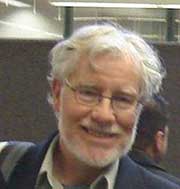 William Craelius received his Ph.D. in Biomedical Engineering from Northwestern University, and did Postdoctoral research in Neuroscience at Stanford University. He co-founded the first Master’s level Prosthetics training program in 1996. He developed Dextra, the first multi-finger prosthesis, that was a finalist in Discover Magazine’s Innovation of the Year Award in 1999. He has applied the Dextra controller to improving dexterity and force control in prosthetic and rehabilitation technology. He has also developed a new algorithm for extracting kinematic information from the surface EMG.
William Craelius received his Ph.D. in Biomedical Engineering from Northwestern University, and did Postdoctoral research in Neuroscience at Stanford University. He co-founded the first Master’s level Prosthetics training program in 1996. He developed Dextra, the first multi-finger prosthesis, that was a finalist in Discover Magazine’s Innovation of the Year Award in 1999. He has applied the Dextra controller to improving dexterity and force control in prosthetic and rehabilitation technology. He has also developed a new algorithm for extracting kinematic information from the surface EMG.
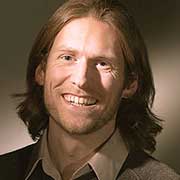 Mike Wininger is Assistant Professor in the Prosthetics & Orthotics Program at the University of Hartford (West Hartford, CT). His primary teaching duties are in neuroscience, and his research interests include prosthetic control, human motor control, and performance analytics.
Mike Wininger is Assistant Professor in the Prosthetics & Orthotics Program at the University of Hartford (West Hartford, CT). His primary teaching duties are in neuroscience, and his research interests include prosthetic control, human motor control, and performance analytics.
 Dario Farina received the M.Sc. degree in electronics engineering from Politecnico di Torino, Torino, Italy, in 1998, and the Ph.D. degrees in automatic control and computer science and in electronics and communications engineering from the Ecole Centrale de Nantes, Nantes, France, and Politecnico di Torino, respectively, in 2001 and 2002.
Dario Farina received the M.Sc. degree in electronics engineering from Politecnico di Torino, Torino, Italy, in 1998, and the Ph.D. degrees in automatic control and computer science and in electronics and communications engineering from the Ecole Centrale de Nantes, Nantes, France, and Politecnico di Torino, respectively, in 2001 and 2002.
From 1997 to 2004 he was a researcher at the Laboratory for Neuromuscular System Engineering (LISiN) of Politecnico di Torino and in this period participated to several projects sponsored by the European Union and the European Space Agency. In 2004–2008 he was Associate Professor in Biomedical Engineering at Aalborg University, Aalborg, Denmark. At the same University, in 2008 he was appointment Full Professor in Motor Control and Biomedical Signal Processing and the Head of the Research Group on Neural Engineering and Neurophysiology of Movement. In 2010 he was appointed Full Professor and Founding Chair of the Department of Neurorehabilitation Engineering (http://www.nre.bccn.uni-goettingen.de/) at the University Medical Center Göttingen, Georg-August University, Germany, within the Bernstein Center for Computational Neuroscience (BCCN) and the Bernstein Focus Neurotechnology (BFNT) Göttingen. In this position, he is also the Chair for NeuroInformatics of the BFNT Göttingen since 2010. Prof. Farina is the President of the International Society of Electrophysiology and Kinesiology (ISEK) since 2012. Among other awards, he has been the recipient of the 2010 IEEE Engineering in Medicine and Biology Society Early Career Achievement Award for his contributions to biomedical signal processing and to electrophysiology and in 2012 he has been elected Fellow of the American Institute for Medical and Biological Engineering (AIMBE). He is an Associate Editor of IEEE Transactions on Biomedical Engineering, Medical & Biological Engineering & Computing, and the Journal of Electromyography and Kinesiology, as well as a member of the Editorial Boards or reviewer for several other International Journals. His research focuses on biomedical signal processing, neurorehabilitation technology, and neural control of movement. Within these areas, his work has been sponsored by European and national fundings that amount to more than seven millions Euros in the past 5 years, including a prestigious Advanced Grant of the European Research Council awarded in 2011. Prof. Farina has (co)-authored more than 260 papers in peer-reviewed Journals and over 350 among conference papers/abstracts, book chapters, and encyclopedia contributions. Among his efforts in scientific dissemination on neurotechnologies, he has recently co-edited the IEEE/Wiley book “Introduction to Neural Engineering for Motor Rehabilitation”.
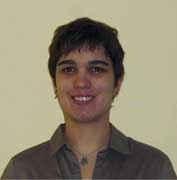 Sasha Blue Godfrey is a postdoctoral fellow with Dr. Antonio Bicchi at the Italian Institute of Technology. She completed a PhD in Biomedical Engineering at the Catholic University of America, studying rehabilitation robotics under Dr. Peter Lum. She was an NSF IGERT Trainee and Sloan Foundation Minority PhD Program Fellow. Her research interests include rehabilitation robotics and upper extremity prosthetics. She is currently working on myoelectric control of a robotic hand for prosthetic applications.
Sasha Blue Godfrey is a postdoctoral fellow with Dr. Antonio Bicchi at the Italian Institute of Technology. She completed a PhD in Biomedical Engineering at the Catholic University of America, studying rehabilitation robotics under Dr. Peter Lum. She was an NSF IGERT Trainee and Sloan Foundation Minority PhD Program Fellow. Her research interests include rehabilitation robotics and upper extremity prosthetics. She is currently working on myoelectric control of a robotic hand for prosthetic applications.
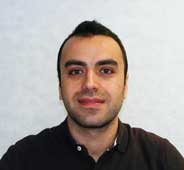 Arash Ajoudani received his BSc. degree in Biomedical (bioelectric) Engineering in 2004 from the Centre of Excellence in Biomedical Engineering, Amirkabir University (Tehran Polytechnic), Tehran, Iran, and MSc. Degree in Biomedical (bioelectric) Engineering in 2007 from the Iran University of Science and Technology, Tehran, Iran. Currently, he is a PhD candidate in Humanoids and Human Centred Mechatronics Lab, Advanced Robotics Department, Italian Institute of Technology and Centro E Piaggio, University of Pisa. He was a finalist for the Best Manipulation paper award at ICRA 2012. He is the author or co-author of several publications in international conferences and journals. He is currently serving as a reviewer for IEEE/ASME Transactions on Mechatronics and IEEE Transactions on Haptics, and international robotic conferences such as ICRA and IROS. His main research interests are in physical human-robot interaction, impedance control, tele-robotics, and functional neuromuscular stimulation.
Arash Ajoudani received his BSc. degree in Biomedical (bioelectric) Engineering in 2004 from the Centre of Excellence in Biomedical Engineering, Amirkabir University (Tehran Polytechnic), Tehran, Iran, and MSc. Degree in Biomedical (bioelectric) Engineering in 2007 from the Iran University of Science and Technology, Tehran, Iran. Currently, he is a PhD candidate in Humanoids and Human Centred Mechatronics Lab, Advanced Robotics Department, Italian Institute of Technology and Centro E Piaggio, University of Pisa. He was a finalist for the Best Manipulation paper award at ICRA 2012. He is the author or co-author of several publications in international conferences and journals. He is currently serving as a reviewer for IEEE/ASME Transactions on Mechatronics and IEEE Transactions on Haptics, and international robotic conferences such as ICRA and IROS. His main research interests are in physical human-robot interaction, impedance control, tele-robotics, and functional neuromuscular stimulation.
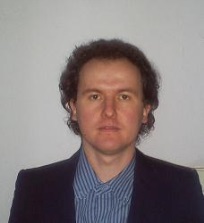 Strahinja Dosen received the Diploma of Engineering in electrical engineering and the M.Sc. degree in 2000 and 2004, respectively, from the Faculty of Technical Sciences, University of Novi Sad, Serbia, and the Ph.D. degree in biomedical engineering from Aalborg University, Aalborg, Denmark, in 2008. Until 2005, he was a Research and Teaching Assistant at the Department for Systems, Signals and Control at the Faculty of Technical Sciences, University of Novi Sad, Serbia. Afterwards, he was first a Research Assistant and then a Research Assistant Professor at the Center for Sensory Motor Interaction, Aalborg University until 2011. Currently, Mr. Dosen is a Research Scientist at the Department of Neurorehabilitation Engineering, University Medical Center, Göttingen, Germany. He is also a visiting Assistant Professor at the Department for Systems, Signals and Control, at the Faculty of Technical Sciences, University of Novi Sad, Serbia. Mr. Dosen has been working in several EU funded projects (Smarthand, Humour, Tremor, Neurotremor, and Myosens), and his research interests include the control and restoration of movement, functional electrical stimulation, nonlinear and optimal control of assistive and robotic systems, and sensory feedback in prosthetics and rehabilitation. He is a member of the IEEE Engineering in Medicine and Biology Society and the IEEE Computer Society.
Strahinja Dosen received the Diploma of Engineering in electrical engineering and the M.Sc. degree in 2000 and 2004, respectively, from the Faculty of Technical Sciences, University of Novi Sad, Serbia, and the Ph.D. degree in biomedical engineering from Aalborg University, Aalborg, Denmark, in 2008. Until 2005, he was a Research and Teaching Assistant at the Department for Systems, Signals and Control at the Faculty of Technical Sciences, University of Novi Sad, Serbia. Afterwards, he was first a Research Assistant and then a Research Assistant Professor at the Center for Sensory Motor Interaction, Aalborg University until 2011. Currently, Mr. Dosen is a Research Scientist at the Department of Neurorehabilitation Engineering, University Medical Center, Göttingen, Germany. He is also a visiting Assistant Professor at the Department for Systems, Signals and Control, at the Faculty of Technical Sciences, University of Novi Sad, Serbia. Mr. Dosen has been working in several EU funded projects (Smarthand, Humour, Tremor, Neurotremor, and Myosens), and his research interests include the control and restoration of movement, functional electrical stimulation, nonlinear and optimal control of assistive and robotic systems, and sensory feedback in prosthetics and rehabilitation. He is a member of the IEEE Engineering in Medicine and Biology Society and the IEEE Computer Society.
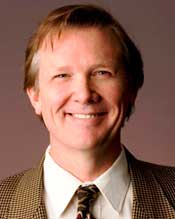 Todd A. Kuiken received his MD and Ph.D. in biomedical engineering from Northwestern (1990) and his residency in PM&R at the Rehabilitation Institute of Chicago (1995). Dr. Kuiken currently is the Director of the Center for Bionic Medicine. He is a Professor in the Depts. of PM&R, Biomedical Engineering and Surgery of Northwestern University.
Dr. Kuiken’s research team is working to develop a neural-machine interface to improve the function of artificial limbs. A main research focus of the lab is developing a technique to use nerve transfers for improvement of myoelectric prosthesis control. By transferring the residual arm nerves in an upper limb amputee to spare regions of muscle it is possible to make new signals for the control of robotic arms. These signals are be directly related to the original function of the limb and allow simultaneous control of multiple joints in a natural way. This work has now been extended with the use of pattern recognition algorithms, enabling the intuitive control of more functions it the prosthetic limbs.
Similarly, hand sensation nerves grow into spare skin so that when this skin is touched, the amputee feels like their missing hand is being touched.
Todd A. Kuiken received his MD and Ph.D. in biomedical engineering from Northwestern (1990) and his residency in PM&R at the Rehabilitation Institute of Chicago (1995). Dr. Kuiken currently is the Director of the Center for Bionic Medicine. He is a Professor in the Depts. of PM&R, Biomedical Engineering and Surgery of Northwestern University.
Dr. Kuiken’s research team is working to develop a neural-machine interface to improve the function of artificial limbs. A main research focus of the lab is developing a technique to use nerve transfers for improvement of myoelectric prosthesis control. By transferring the residual arm nerves in an upper limb amputee to spare regions of muscle it is possible to make new signals for the control of robotic arms. These signals are be directly related to the original function of the limb and allow simultaneous control of multiple joints in a natural way. This work has now been extended with the use of pattern recognition algorithms, enabling the intuitive control of more functions it the prosthetic limbs.
Similarly, hand sensation nerves grow into spare skin so that when this skin is touched, the amputee feels like their missing hand is being touched.
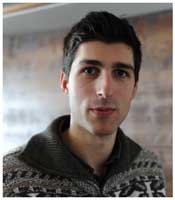 Marko Markovic received the B.Sc. degree in biomedical engineering from Faculty of Electrical Engineering, Belgrade, Serbia, in 2010, and later the M.Sc. degree within the same institution in 2011.
He is currently employed as the research associate in the Department ofNeurorehabilitation Engineering at the University Medical Center
Gottingen, where he is also working towards his PHD degree.
Marko Markovic received the B.Sc. degree in biomedical engineering from Faculty of Electrical Engineering, Belgrade, Serbia, in 2010, and later the M.Sc. degree within the same institution in 2011.
He is currently employed as the research associate in the Department ofNeurorehabilitation Engineering at the University Medical Center
Gottingen, where he is also working towards his PHD degree.